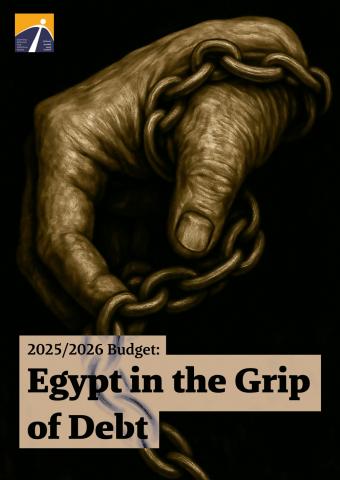The 2025-2026 Budget: Egypt in the Grip of Debts
-
58% of new loans are allocated to servicing existing debt, and interest is equivalent to 87% of tax revenue
-
Salaries for senior government officials set to increase by 66%, compared to a 17% raise for healthcare workers and 4% for teachers
The House of Representatives is currently reviewing the draft budget for the 2025/2026 fiscal year, which was presented by the Minister of Finance in mid-April. It will next be discussed by the relevant parliamentary committees before finalizing the plan for the fiscal year starting in July.
The budget will be debated amid the continued decline of the standard of living of most Egyptians caused by a series of economic decisions and austerity policies implemented by the government to reduce public spending. These included the liberalisation of prices for various goods and services—such as fuel, electricity, food, and medicine—resulting in successive waves of price hikes. At the same time, public spending continues to rise rather than fall, as state budgets indicate year after year. This increase, however, is largely directed toward servicing debt and interest payments, enriching the state's creditors at the expense of citizens whose living conditions are steadily deteriorating.
Egypt’s economic crises are exacerbated by policies that have left the country highly vulnerable to external shocks and regional pressures—including the ongoing genocidal war waged by Israel in Gaza and its repercussions in the Red Sea, which have impacted Suez Canal revenues. Additionally, Egypt faces global challenges related to U.S. trade policies that have created uncertainty in international markets.
Egypt is increasingly dependent on domestic and external debt as a primary source of financing, clearly impacting the composition of the upcoming fiscal year’s budget. Debt repayments, including interest, account for nearly two-thirds of the government’s planned expenditures. Borrowing continues to be the principal mechanism through which the state secures new resources to bridge the gap between revenues and expenditures—a trend that is expected to persist and deteriorate in the coming years.
While spending on servicing domestic and external debt has steadily increased over the past decade, Real-term expenditure on essential services—such as wages, healthcare, education, and social protection—has declined.




